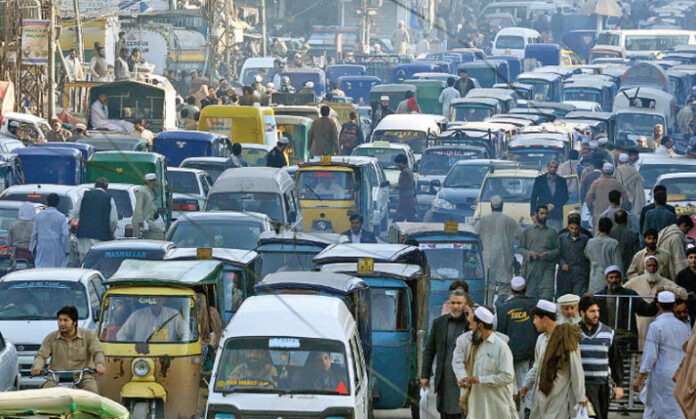
Kaif Afridi
A few days ago, accompanied by a friend, I set out to console a colleague on the demise of his father, a journey spanning about 3 km. Initially contemplating using the car, we opted to walk, which proved to be a wise decision. Passing through Sadar Bazar, we encountered snaking queues of vehicles, making footpath navigation a challenge. The congested roads made us appreciate our decision to walk, avoiding potential hours lost in traffic jams and fuel consumption.
Our conversation centered on the overwhelming number of vehicles compared to pedestrians, prompting concerns about Peshawar’s future. The nostalgia for a time when people walked more, lived longer, and faced fewer diseases lingered in our discussion. The detrimental impact of vehicle pollution and emitted fumes on human health remained largely ignored. Our condolence visit culminated in reflecting on the pain of those stuck in traffic, acknowledging the air pollution contributing to widespread health issues in the city.
Also Read: Evolution of Beauty: A Historical Glimpse into Cosmetic Surgery
Research confirms the hazardous impact of vehicle emissions in Peshawar. The World Health Organization (WHO) reports that 7 million deaths worldwide are attributed to air pollution annually, with 9 out of 10 people breathing air pollutants exceeding WHO guidelines. Medical reports link toxic emissions to epidemics like heart disease, lung cancer, respiratory diseases, and potential long-term damage to various organs.
Beyond respiratory issues, pollution contributes to ailments such as stomach pain, anemia, constipation, headaches, irritability, and memory loss. Nitrogen oxides, primarily from motor engines, induce symptoms like coughing, nose/throat irritation, headaches, chest pain, and fever. Pakistan ranks seventh among countries most affected by climate change, with Lahore and Peshawar holding dubious distinctions as the world’s most polluted cities.
Alarmingly, if air pollution remains unchecked, Peshawar’s average life expectancy is projected to decrease by three and a half to seven years, according to WHO. Creating awareness becomes paramount, emphasizing the natural environment’s role in sustaining life. Disturbing this delicate balance could lead to catastrophic consequences, necessitating concerted efforts from both the government and the people to curb air pollution and safeguard the city’s future.

